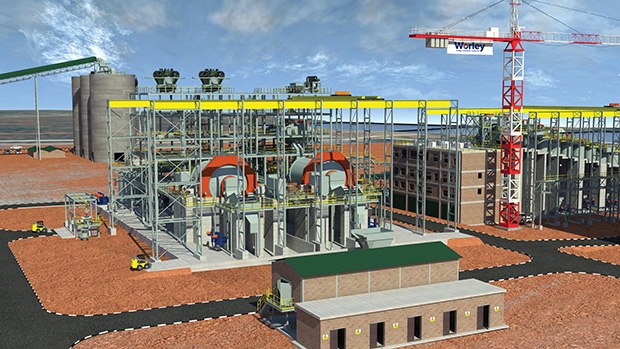The digital age is ushering in dramatic change as new technology is adopted at an exponential rate, merging the physical world with the virtual and allowing industry to use technology to improve efficiencies, safety and return on investments. Leading the way in digital transformation in the energy, chemicals and resources sectors, global project and asset services provider Worley is taking digital design capabilities beyond 5D.
By using Building Information Modelling (BIM), Worley is creating digital information models from 3D right through to 7D that contain both graphical and non-graphical information in a Common Data Environment. The information builds in value as the project stages progress until the complete data set is handed over to the client at the conclusion of a project, ready for operation. Each dimension of data offers clients a fuller understanding of their project, from generating accurate programme data to producing accurate estimate costs, and ultimately providing a digital data bank that can be used to drive efficient operation and management and better business outcomes.

A virtual image of a processing plant prepared using BIM.
Starting with a 3D model, 4D adds the benefit of a project schedule, providing greater insight throughout the design process. 5D allows control of cost and budget components and captures progress dynamically, allowing the entire project team to visualise the project objectives. The benefits of 6D and 7D come to light at handover and provide end-users with a better understanding of the lifecycle and sustainability of their assets.
BIM Manager for Worley, Russell Du Plessis, says South Africa’s mining and mineral processing sectors have traditionally focused on upfront capital costs; however, 6D and 7D BIM allow a planned, pro-active approach to assets that is significantly beneficial, not least in terms of costs.
Du Plessis says that while many companies provide 4D and 5D design focusing on the cost and schedule of construction, Worley’s 6D digital capabilities action the commissioning of a project, while 7D allows for optimal operation. He adds that, ideally, the information model should continue to evolve during the ‘in use’ phase with updates on repairs, replacements, operational data and diagnostics to further assist with informed and effective future decision making.
“Worley’s 7D design data mapping allows real-time access to operational related metadata for equipment and systems within a project in a virtual or augmented reality environment. It provides our customers with a highly valuable electronic asset that can easily geographically integrate details that were previously overlooked in paper files,” says Du Plessis.
Developed to assist in designing sustainable assets, Worley’s 6D data incorporates the Worley SEAL system (Sustainable Engineering for Asset Lifecycle), a unique approach to engineering delivery which integrates technical integrity and safe and sustainable design processes under a common umbrella. The result is designs that are technically compliant with statutory and customer requirements; safer to build, operate and decommission; and provide appropriate sustainable solutions that comply with Worley’s framework aimed at achieving zero harm.
While there are many third party providers offering 3D modelling services to the mining sector, Worley is one of the few companies with in-house digital capabilities with the know-how and technology to take BIM right through to 7D. Du Plessis says that 7D modelling is where operational functionality lies and also offers customers peace of mind in terms of due diligence in the commissioning process. This furthermore makes 7D BIM a highly valuable tool from an insurance point of view, providing a transparent and accountable digital record. “It’s the underlying data that is of value, not the virtual image, as this powerful integrated data makes it possible to provide design accuracy, look pre-emptively forward, and create an intelligent and integrated project scope that runs from the design phase right through to operation and decommissioning,” says Du Plessis.
Denver Dreyer, Senior Vice President Mining, Minerals & Metals (MM&M) Europe, Middle East and Africa for Worley, affirms Worley’s ongoing commitment to digital transformation, saying that as a global centre for mining and minerals processing excellence, the business is pioneering the move away from cumbersome paper trails to instantly accessible digital data in South Africa. “Worley is leading the way forward in terms of developing BIM capabilities for mining in South Africa, and it’s a necessary step for any business wanting to prosper in the new digital age.” He adds that this requires a change in mindset of the entire project team, including the customers’ side, right down to mine personnel in order to successfully leverage the immense benefits of technology.
Worley is at the forefront of developing digital solutions for the planning, design and execution of mining projects, with the South African office having been responsible for the design and development of much of the group’s leading-edge technology in mining and minerals processing. Worley conforms to standards set out by the BIM Institute of Africa, and already has a number of leading customers successfully utilising their BIM capabilities.